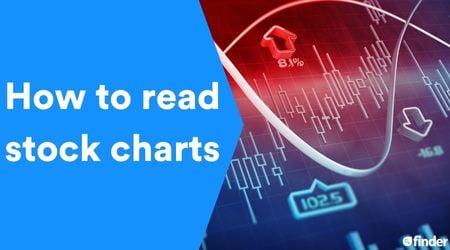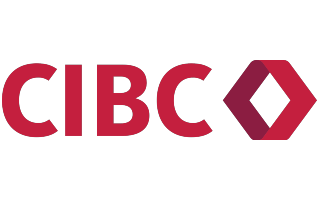To buy a company’s stock, you should know something about the company. Often, you don’t need to look much further than a company’s financials to determine whether it’s a good fit for your portfolio.
Many stock trading platforms offer tools for conducting fundamental analysis—which is key to figuring out if a company is worth backing.
First up: What’s fundamental analysis?
Fundamental analysis is a method of valuing a stock based on financial data and the company’s history like its balance sheet, revenue, profitability and earnings per share (EPS). A stock’s price isn’t always an accurate representation of its value.
Some stocks are overvalued—others are undervalued. Fundamental analysis can help you uncover a stock’s true value to identify prime opportunities for long-term growth.
Fundamental analysis is one of two ways to value stocks. The other method—typically employed by active traders—is technical analysis. This form of analysis relies on sophisticated charting tools to analyze a stock’s price history and movement.
Technical analysis can be useful, but is better suited to short-term trades rather than long-term investments.
5 tools to use when valuing stocks
High-quality tools are the key to well-informed trading decisions. These 5 fundamental analysis tools are ideal for the value investor seeking top-notch data.
1. Company financials
Company data goes far beyond its valuation and stock price. To get an accurate picture of a company’s financial health, you need to dig into the details. Consider accessing stats on market research platforms like Finviz, Morningstar and Yahoo Finance. Look for the following metrics:
- Valuation. Get a sense of how much the company is worth in the eyes of the overall market.
- Balance sheets. Browse quarterly or annual balance sheets for a broad overview of current assets, liabilities and shareholder equity.
- Cashflow statements. Review operating, investing and financing cash flow to see how the company’s money moves.
- Earnings per share (EPS). Find out how profitable a company is on a per-share basis.
- Price-to-earnings ratio (P/E). Review how the company’s stock measures up to its earnings per share.
- Price-to-book ratio (P/B). Compare the company’s market value with its book value — the net value of its assets.
- Price-to-sales ratio (P/S). Review the company’s revenue multiple by putting its stock value and revenue head to head.
- Analyst ratings. Explore analyst ratings to track whether the stock is under- or over-performing month over month.
- Revenue. Get a detailed breakdown of revenue composition by business category and region.
- Return on equity (ROE). Explore charted year-over-year ROE trends for an accurate look at how a company makes use of its resources.
2. Real-time heat lists
Get a big-picture overview of market performance with heat lists. These can help you gauge market performance across Canadian, US and international markets in real time. Data is shown in green and red to help you quickly zero in on the type of investment you’re seeking. Browse trade, search and news heat lists to identify stocks with forward momentum.
3. 24/7 financial news
The market waits for no one—and staying on top of industry-impacting news events is a vital part of value investing. Never miss a beat with market news that’s updated around the clock:
- News headlines. Explore announcements from major news sources like MarketWatch, InvestorPlace, Dow Jones, Benzinga, Bloomberg and more. Major market and industry news has the potential to affect the value of a company’s stock and subsequently your portfolio.
- Earnings calendar. Track upcoming earnings reports across companies you’re interested in. Earnings reports act as a temperature gauge, helping interested investors and shareholders alike assess the company’s financial health.
- IPO calendar. Stay on top of companies slotted for public release. IPOs are a popular investment vehicle, and half the battle for an interested investor is knowing when and where an IPO will price.
- Dividend/stock split calendar. Learn about which companies are expecting dividend payouts or stock splits. Stock splits affect the value of shares, and dividends are an important asset to track for income investors.
4. Stock comparison tools
Some research tools allow you to pit 2 or more stocks against each other to directly compare present and historical performance as well as various data points. See how multiple stocks stack up across numerous metrics, including:
- Market cap
- Volume
- Revenue
- Gross profit
- Assets and liabilities
- Dividend yield
- Target price
- EPS
- P/E
- P/B
- P/S
- ROE
5. Institutional holdings
If you’re looking for inspiration from the pros, learn from top institutions like Bridgewater Holdings, Soros Holdings, Renaissance Technologies, Capital Research and more by tapping into these companies’ holdings to see which investments may be worth watching.
Finder survey: Are men or women more likely to consider trading tools when choosing a stock trading platform?
Response | Male | Female |
|---|---|---|
| Trading tools and platforms | 34.82% | 27.02% |
Other useful tools for value investors
Educational courses
Consider taking educational courses to grow your knowledge of the following:
- Stocks. Learn about stock basics, IPO investing, fundamental analysis, technical analysis and valuation analysis.
- Options. Read about options trades, explore how options work and learn how to read an options table.
- Funds. Dive into ETF basics and strategies, then further your knowledge with information on daily leverage certificates and real estate investment trusts (REITs).
- Investing from different perspectives. Learn about crypto basics, economic indicators, the Federal Reserve and more.
Community discussion board
Loads of beginner and experienced investors alike use community discussion boards to swap ideas and hunt down promising investments. Connect with fellow traders on active discussion boards to discuss trades, trending topics, market news and strategies with like-minded investors from around the world.
Bottom line
If you’re frustrated by the limited research options offered by beginner investment apps, it may be time to explore a more sophisticated trading platform. The better-informed your trade, the less risk you invite into your investment portfolio. Sign up for a stock trading account today to access all the tools you need to conduct high-quality fundamental analysis.
More investing guides

What are the best stocks for beginners with little money to invest?
Want to dive into investing but don’t have much to spend? Take a look at these types of stocks.
Read more…
Meme stocks: What they are and examples of popular stocks
Meme stocks can produce large gains in short periods, but the stocks are volatile.
Read more…
How do ETFs work?
Your guide to how ETFs work and whether this type of investment is right for you.
Read more…
How to read stock charts
Learning how to read stock charts and recognize chart patterns can unlock your success as a trader.
Read more…
What are stocks?
Owning a stock means you own part of a company and can potentially grow your wealth. But there is a risk of loss.
Read more…
How to analyze a stock
Learn how to research stocks and find the right investment opportunities in 4 steps.
Read more…More guides on Finder
-
Full guide to paper trading accounts for 2025
How to choose the best paper trading platform to help you learn the ins and outs of investing.
-
How will tariffs affect the stock market?
Find out how the Trump tariffs will impact the stock market and explore Canadian stocks that may be resilient amidst tariffs.
-
What are the best stocks for beginners with little money to invest?
Want to dive into investing but don’t have much to spend? Take a look at these types of stocks.
-
Trading promos & investment account bonuses for 2025
Enjoy perks like free trades and cash back when you open a stock trading account with these online broker promotions.
-
TD Easy Trade review
Use this self-directed trading app to learn the basics of investing with a streamlined app and a number of free trades annually.
-
Best renewable energy stocks
These are the best renewable energy stocks to buy now in Canada.
-
10 best trading platforms and apps in Canada for 2025
Whether you’re a new or experienced investor, these are the best stock trading platforms and apps in Canada.
-
TD Direct Investing Review
Make quick and easy trades using this reputable online trading platform from TD.
-
RBC Direct Investing review
Here’s what you need to know about the benefits and shortcomings of this Big Bank investment platform.
-
Questrade review
Questrade is a leader among Canadian discount brokerages, but is it right for you? Compare fees, features and alternatives here.



